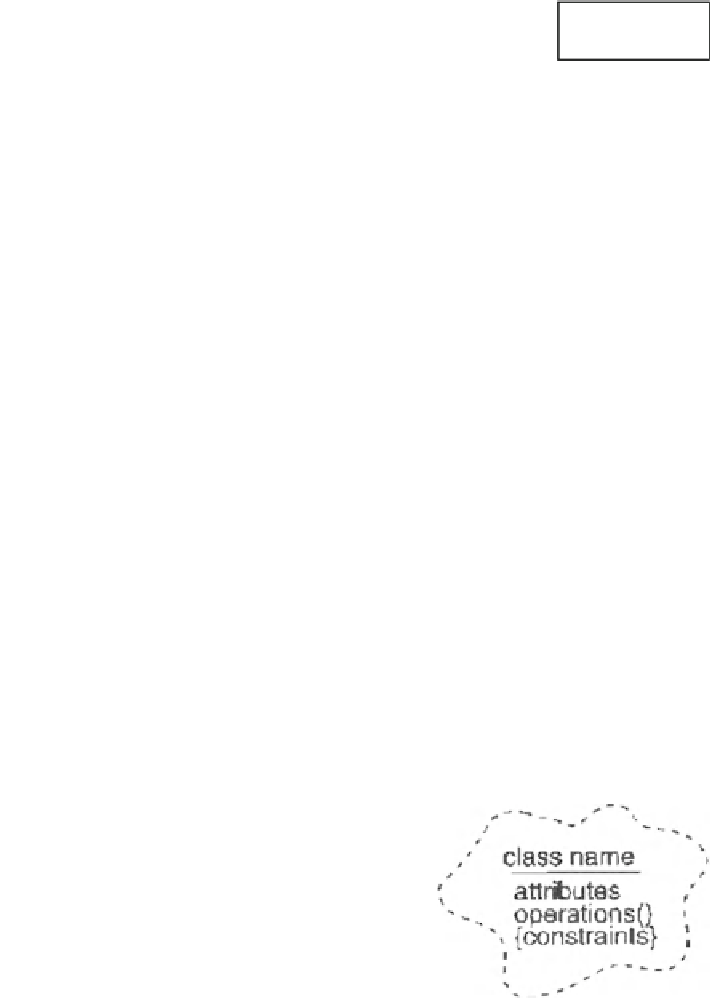Information Technology Reference
In-Depth Information
Fig. 3.9
Multiplicity
Company
1.
Person
3.4 Models
3.4.1 Class Diagram
A class diagram is a way of visualizing a software system based on the
abstractions, or classes, that it is comprised of and the relationships between them.
Class diagrams are generated throughout the software development process.
During the analysis phase of development, class diagrams are used to indicate the
common roles and responsibilities associated with all of the entities that define
the system's behavior. Class diagrams are used in the design phase to describe the
system's architecture, based on the structure of the classes, which it is composed
of. A given class diagram may not represent a system's entire class structure, but
rather can be specified and tailored for the situation at hand.
The major component of the class diagram is, of course, the class. As we said
earlier, a model of a class consists of the class' name, attributes and methods. We
can now add constraints enforced upon the class to this list, such as the class's
multiplicity. The Booch abstract image of a class and the important information
that will be shown in the model is given below in Fig.
3.10
.
A class diagram consists of many classes, and is used to depict their structure
and relationships in a logical and meaningful way. Class diagrams are considered
static. That is, they are used to illustrate which classes interact, but they do not go
so far as to describe what occurs when said interaction occurs. In the figure below,
a class diagram is used to model a customer order system. The diagram is centered
around the
Order
class, which interacts with both a
Customer
class, and a
Payment
class. Contained within the
Order
class is an
OrderDetail
class,
Fig. 3.10 Booch class image
(Booch
1994
)




